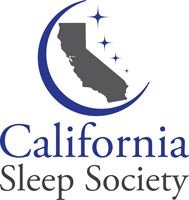By: Patrick Moday, BBA, RPSGT, RST, CCSH
You know, the first sign of dementia is when you repeat yourself.
You know, the first sign of dementia is when you repeat yourself.
Dementia
Dementia is the loss of cognitive functioning — thinking, remembering, and reasoning — to such an extent that it interferes with a person’s daily life and activities. Some people with dementia cannot control their emotions, and their personalities may change. Dementia ranges in severity from the mildest stage, when it is just beginning to affect a person’s functioning, to the most severe stage, when the person must depend completely on others for basic activities of daily living, such as feeding oneself.
The difference between dementia and Alzheimer’s disease
While dementia is a general term, Alzheimer’s disease is a specific brain disease. It is marked by symptoms of dementia that gradually get worse over time. Alzheimer’s disease first affects the part of the brain associated with learning, so early symptoms often include changes in memory, thinking, and reasoning skills.
Dementia and sleep
Circadian rhythm is a collection of physical and psychological processes that guide our sleep-wake cycle by responding to indicators in our environment. People with dementia experience fundamental changes in their circadian rhythm that work against getting quality sleep on a regular schedule. The suprachiasmatic nucleus (SCN) is the part of the brain that serves as our internal clock and responds to cues, such as light, to indicate when we should be alert and when we should feel sleepy. Individuals who have Alzheimer’s disease—the most common type of dementia—often have damaged cells in the SCN and decreased cellular activity in this part of the brain. The result of this dysfunction is that patients are often unable to follow a 24-hour sleep-wake cycle and instead sleep excessively during the day and sleep much less at night. Additionally, dementia is associated with changes in sleep structure. When we sleep, our bodies cycle through a series of sleep stages, from light sleep (stages 1 and 2) to deep sleep (stage 3 or slow-wave sleep), and then dream sleep (also called rapid eye movement or REM sleep). Slow-wave sleep and REM sleep are critical parts of how sleep works to restore the body and mind. People with dementia spend less time in slow-wave sleep and REM sleep and more time in the earlier stages of sleep. This reduction of deep sleep and REM sleep can worsen as dementia progresses.
Dementia and sleep disorders
People with dementia are frequently affected by sleep disorders. The following sleep disorders are found most often in older adults, but they are seen at even higher rates in people with dementia.
Restless legs syndrome (RLS): RLS is characterized by an overwhelming desire to move the legs, especially at night. RLS is common in people with a type of dementia called Lewy body dementia.
Periodic limb movement disorder (PLMD): PLMD causes uncontrollable movements of the arms and/or legs at night. Many patients with PLMD also have RLS.
Obstructive sleep apnea (OSA): OSA is a condition marked by nighttime airway collapse leading to brief lapses in breathing. OSA is particularly common with Alzheimer’s disease, occurring in 40% of patients. Having OSA also increases one’s risk of developing dementia.
REM sleep behavior disorder: REM sleep behavior disorder causes individuals to act out their dreams, sometimes in dangerous ways. It is most often found in individuals with Lewy body dementia and is sometimes the first symptom that arises with this type of dementia.
Depression: Although depression is a mood disorder, it is associated with insomnia and other sleep disturbances. Depression is common in people with dementia, and it is seen at increasing rates as dementia progresses to more severe stages.
Other sleep issues in people with dDementia
According to the Alzheimer’s Association, as many as 20 percent of people with Alzheimer’s experience sundown syndrome. When your loved one has dementia (and some other conditions, as well), the approach of sundown can trigger sudden emotional, behavioral or cognitive changes.
These might include:
- Mood swings
- Anxiety
- Sadness
- Restlessness
- Energy surge
- Increased confusion
- Hallucinations
- Delusions
These may lead, in turn, to challenging behaviors like pacing, rocking, screaming, crying, disorientation, resistance, anger, aggression — even violence. Many people experiencing sundown syndrome feel the urgent need to go somewhere or do something, but they can’t always explain why. In some cases the sleep schedule is flipped. Staying awake all night and sleeping all day.
What are the reasons for poor sleep in people with dementia?
Sundowning can contribute to insomnia and other sleep problems when these behaviors continue into the night. Possible causes of sundowning include the circadian rhythm changes that occur in dementia, as well as fatigue, depression, and pain. People with dementia may also talk, yell, or cry out at night if they cannot sleep.
Tips for caregivers for dementia patients and sleep
- Keep them on a consistent schedule
- Ensure they exercise regularly
- Monitor their daily naps
- Create a calming nighttime routine
- Establish a consistent sleep routine

